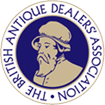English Delftware
Delftware
The term “Delftware” is used to describe tin-glazed earthenware, the most popular form of domestic pottery from the mid-17th century until the mid-18th century. It was eventually replaced by lead glazed and creamware pottery thanks to the work of Wedgwood, Whieldon and other Staffordshire potters. These new wares were more functional and affordable.
Delftware has a tin glaze coating containing tin oxide which produces an opaque white brilliant surface. It hides the underlying buff coloured clay body and produces a surface similar to porcelain which is an ideal surface to decorate. The palette of colours is limited as the mineral pigment used required high firing temperatures. The classic colour range is blue, yellow, orange, purple, green and red.
The development of the tin glaze technique derived from the town of Delft and it is likely that the Dutch potters were inspired by the Chinese porcelain which graced the tables and rooms in the finest houses.
The English potters, who employed many immigrant workers from the continent, were quick to exploit the new technique and markets developed by the Dutch. The main centres of English production were London, Bristol, Liverpool and Wincanton. Delftware was also produced in Dublin and Glasgow in the mid-18th century.
Many everyday wares were made: tiles, mugs, drug jars, plates, dishes, bottles, posset pots, salts, candlesticks, fuddling cups, puzzle jugs, barber’s bowls, pill slabs, porringers, flower bricks and vases. Perhaps the most iconic items in delftware are the Blue Dash chargers. They are stunningly decorative and often made to commemorate Royal and Military personalities. Amongst the most popular were the Adam and Eve Chargers of “The Temptation”.
Many types of decoration were produced; floral bouquets, tulips, oak leaves, fruits, animals, birds, buildings, rural landscapes, religious themes, social commentary, ships, chinoserie etc. etc. Some of the images produced are truly artistic and are fine early examples of “outsider art”. The decoration is often simply and naively rendered in an informal and fluid form and when combined with the specific range of colours results in a highly stylised art form which is uniquely recognisable. There is a certain humanity in the soft creamy white glaze and colours which have an easy and timeless appeal.
There are many serious private collections of English delft and most international museums will have several examples in their inventory. Major collections are held in both English and American Museums.
Numerous reference books have been produced on the subject of English delft. Michael Archer has produced several major works relating to delftware in museum collections, The Fitzwilliam Museum the most notable. Dated English Delftware by Lipski and Archer is acknowledged as one of the major references.
Other significant works are often associated with collections such as Longridge written by Leslie Grigsby which has a comprehensive number and range of images.


